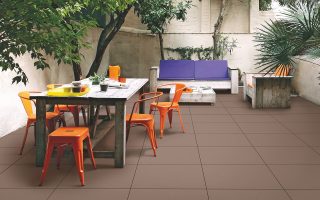If you’re an interior designer looking to generate more leads for your business, you might be wondering how to use modern technologies to your advantage.
One of the most exciting tools available to businesses today is ChatGPT, a powerful language model developed by OpenAI.
In this step-by-step guide, I’ll explain how interior designers can use ChatGPT to generate leads and grow their businesses.
Step 1: Understand What ChatGPT Is.
Before we dive into the specifics of how to use ChatGPT for lead generation, let’s take a moment to explain what ChatGPT is.
ChatGPT is an artificial intelligence language model that has been trained on a massive dataset of text. This training allows ChatGPT to generate high-quality human-like responses to text-based prompts.
Essentially, ChatGPT can carry on a conversation with a human user, in a way that feels natural and intuitive.
Step 2: Identify Your Target Audience.
The first step in using ChatGPT for lead generation is to identify your target audience.
Who are the people you want to reach with your marketing efforts?
As an interior designer, you might be targeting homeowners who are looking to remodel their homes, or perhaps you’re targeting commercial clients who need interior design services for their businesses.
Step 3: Develop a List of Keywords.
Developing a list of relevant keywords is crucial for using ChatGPT effectively as a lead generation tool. These keywords will help you create prompts that resonate with your target audience and encourage them to engage with your business. Here are some tips for developing a list of keywords:
Get the eBook: ChatGPT for Interior Designers: How to work smarter, not harder.
1. Consider Your Target Audience
The first step in developing a list of keywords is to consider your target audience. Think about the types of words and phrases your potential clients might use when searching for interior design services. For example, if you’re targeting homeowners who are looking to remodel their homes, you might consider keywords like “home remodeling,” “interior design,” “home decor,” “renovation,” “home improvement,” and so on.
2. Use Keyword Research Tools
Another helpful strategy for developing a list of keywords is to use keyword research tools. There are many free and paid tools available online that can help you identify relevant keywords and phrases for your business. Some popular options include Google Keyword Planner, SEMrush, and Ahrefs.
These tools allow you to enter a seed keyword or phrase and generate a list of related keywords that people are searching for. You can use this information to identify the most popular and relevant keywords for your business.
Get the eBook: ChatGPT for Interior Designers: How to work smarter, not harder.
3. Think About Long-Tail Keywords
In addition to broad keywords, it’s also important to consider long-tail keywords. These are longer, more specific phrases that people might use when searching for interior design services.
For example, instead of using the broad keyword “home remodelling,” you might target a more specific long-tail keyword like “kitchen remodelling in Los Angeles.”
Long-tail keywords can be less competitive than broad keywords, which means you may be able to rank higher in search engine results pages for these phrases.
4. Look at Competitor Keywords
Finally, it’s a good idea to look at the keywords your competitors are targeting. This can give you insight into the types of keywords and phrases that are working well in your industry. You can use tools like SEMrush or Ahrefs to analyze your competitors’ websites and identify the keywords they’re targeting.
By developing a list of relevant and specific keywords for your business, you can create ChatGPT prompts that resonate with your target audience and encourage them to engage with your business. Use a combination of keyword research tools, long-tail keywords, and competitor analysis to identify the most effective keywords for your business.
Step 4: Create a ChatGPT Prompt.
Now that you have your list of keywords, it’s time to create a ChatGPT prompt.
This prompt should be designed to engage your target audience and encourage them to interact with your business.
For example, if you’re targeting homeowners who are looking to remodel their homes, your prompt might be something like, “Looking to renovate your home? Chat with us to learn how we can help you transform your space!”
Step 5: Integrate ChatGPT into Your Website.
Once you’ve created your ChatGPT prompt, you’ll need to integrate it into your website.
This can be done using a chatbot plugin or widget. When a user visits your website, they’ll be prompted to engage with ChatGPT, which will then carry on a conversation with them. This conversation can be used to collect lead information, answer questions about your services, and more.
Step 6: Monitor ChatGPT Performance.
Finally, it’s important to monitor the performance of your ChatGPT system to ensure that it’s generating leads effectively. You can do this by tracking the number of conversations initiated by ChatGPT, the number of leads generated, and other metrics. Use this information to fine-tune your ChatGPT system and make adjustments as needed.
Conclusion.
ChatGPT can be an incredibly powerful tool for interior designers looking to generate more leads for their businesses.
By understanding how ChatGPT works, identifying your target audience, developing a list of keywords, creating a ChatGPT prompt, integrating ChatGPT into your website, and monitoring performance, you can use this innovative technology to grow your business and attract new clients.
If you’re ready to take your lead generation efforts to the next level, ChatGPT is an excellent place to start.




